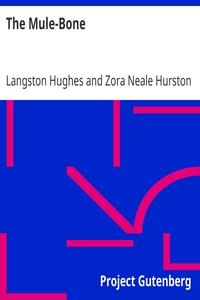|
|
Read this ebook for free! No credit card needed, absolutely nothing to pay.Words: 10578 in 4 pages
This is an ebook sharing website. You can read the uploaded ebooks for free here. No credit cards needed, nothing to pay. If you want to own a digital copy of the ebook, or want to read offline with your favorite ebook-reader, then you can choose to buy and download the ebook.

: Libraries in the Medieval and Renaissance Periods The Rede Lecture Delivered June 13 1894 by Clark John Willis - Libraries History 400-1400; Libraries History 1400-1600; Manuscripts Renaissance; Manuscripts Medieval Bibliomania@FreeBooksTue 06 Jun, 2023 Whenever we turned aside to the cities and places where the Mendicants had their convents ... we found heaped up amidst the utmost poverty the utmost riches of wisdom.... These men are as ants ever preparing their meat in the summer, and ingenious bees continually fabricating cells of honey.... And to pay due regard to truth, although they lately at the eleventh hour have entered the Lord's vineyard ..., they have added more in this brief hour to the stock of the sacred books than all the other vine-dressers; following in the footsteps of Paul, the last to be called but the first in preaching, who spread the gospel of Christ more widely than all others. How then did they bestow their books after they had become too numerous to be kept in the church? The answer to this question is a very curious one, when we consider what our climate is, and indeed what the climate of the whole of Europe is, during the winter months. The centre of the monastic life was the cloister. Brethren were not allowed to congregate in any other part of the conventual buildings, except when they went into the frater, or dining-hall, for their meals, or at certain hours in certain seasons into the warming-house . In the cloister accordingly they kept their books; and there they sat and studied, or conducted the schooling of the novices and choir-boys in winter and in summer alike. In the north syde of the Cloister, from the corner over against the Church dour to the corner over againste the Dorter dour, was all fynely glased from the hight to the sole within a litle of the grownd into the Cloister garth. And in every wyndowe iij Pewes or Carrells, where every one of the old Monks had his carrell, severall by himselfe, that, when they had dyned, they dyd resort to that place of Cloister, and there studyed upon there books, every one in his carrell, all the after nonne, unto evensong tyme. This was there exercise every daie. All there pewes or carrells was all fynely wainscotted and verie close, all but the forepart, which had carved wourke that gave light in at ther carrell doures of wainscott. And in every carrell was a deske to lye there bookes on. And the carrells was no greater then from one stanchell of the wyndowe to another. And over against the carrells against the church wall did stande certaine great almeries of waynscott all full of bookes , wherein did lye as well the old auncyent written Doctors of the Church as other prophane authors with dyverse other holie mens wourks, so that every one dyd studye what Doctor pleased them best, havinge the Librarie at all tymes to goe studie in besydes there carrells. No example of an English monastic book-press has survived, so far as I have been able to discover; but it would be rash to say that none exists. Meanwhile I will shew you a French example of a press, from the sacristy of the Cathedral at Bayeux, but I cannot be sure that it was originally intended to hold books. M. Viollet-Le-Duc, from whom I borrow it, decides that it was probably made early in the thirteenth century. A similar receptacle for books seems to have been contemplated in Augustinian Houses, for in the Customs of the Augustinian Priory of Barnwell, written towards the end of the thirteenth century, the following passage occurs: The press in which the books are kept ought to be lined inside with wood, that the damp of the walls may not moisten or stain the books. This press should be divided vertically as well as horizontally by sundry partitions, on which the books may be ranged so as to be separated from one another; for fear they be packed so close as to injure each other, or delay those who want them. As time went on, the number of the books would naturally increase, and by the beginning of the fifteenth century the larger monasteries at least had accumulated many hundred volumes. For instance, at Christ Church, Canterbury, at the beginning of the 14th century, there were 698. These had to be bestowed in various parts of the House without order or selection,--in presses set up wherever a vacant corner could be found--to the great inconvenience, we may be sure, of the more studious monks, or of scholars who came to consult them. To remedy such a state of things a definite room was constructed for books--in addition to the presses in the cloister, which were still retained for the books in daily use. A few instances of this will suffice. At Christ Church, Canterbury, a library was built between 1414 and 1443 by Archbishop Chichele, over the Prior's Chapel; at Durham between 1416 and 1446 by Prior Wessyngton, over the old sacristy; at Citeaux in 1480, over the writing-room ; at Clairvaux between 1495 and 1503, in the same position; at S. Victor in Paris--an Augustinian House--between 1501 and 1508; and at S. Germain des Pr?s in the same city about 1513, over the south cloister. Most of us, I take it, have more or less imperfect ideas of the appearance of a great monastery in the days of its completeness; and information on this point is unfortunately much more defective for our own country than it is for France. In illustration, therefore, of what I have been saying about the position of monastic libraries, I will next shew you two bird's-eye views of the Benedictine House of S. Germain des Pr?s, Paris. The first, dated 1687, shews the library over the south walk of the cloister, where it was placed in 1513. It must not, however, be supposed that no library existed before this. On the contrary, the House seems to have had one from the first foundation, and so early as the thirteenth century it could be consulted by strangers, and books borrowed from it. The second view, dated 1723, shews a still further extension of the library. It has now invaded the west side of the cloister, which has received an upper storey, and even the external appearance of the venerable refectory, which was respected when nearly all the rest of the buildings were rebuilt in a classical style, has been sacrificed to a similar gallery. The united lengths of these three rooms must have been little short of 324 feet. This library was at the disposal of all scholars who desired to use it. When the Revolution came it contained more than 49,000 printed books, and 7000 manuscripts. The fittings belonged to the period of its latest extension: they appear to have been sumptuous, but for my present object, uninteresting. At Canterbury the library, built as I have said, over the Prior's Chapel, was 60 feet long, by 22 feet broad; and we know, from some memoranda written in 1508, when a number of books were sent to be bound or repaired, that it contained sixteen bookcases, each of which had four shelves. I have calculated that this library could have contained about 2000 volumes. Free books android app tbrJar TBR JAR Read Free books online gutenberg More posts by @FreeBooks
: General Instructions for the Guidance of Post Office Inspectors in the Dominion of Canada by Campbell Alexander - Postal service Canada Handbooks manuals etc. The Philatelic Digital Library Project@FreeBooksTue 06 Jun, 2023

: Thoughts on religion at the front by Talbot N S Neville Stuart - World War 1914-1918 Religious aspects World War I@FreeBooksTue 06 Jun, 2023
|
Terms of Use Stock Market News! © gutenberg.org.in2025 All Rights reserved.






